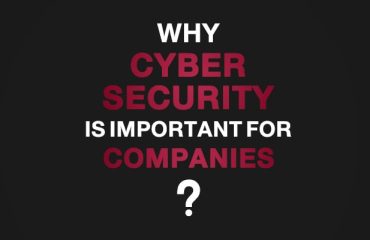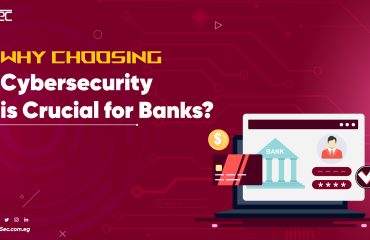
As educational institutions continue to embrace digital transformation, the cybersecurity landscape in education is more critical than ever. Schools, colleges, and universities rely heavily on technology for student learning, administration, and data management, making them prime targets for cyberattacks. From student records and staff data to sensitive financial information, educational institutions hold vast amounts of valuable data that needs to be protected. In this digital age, cybersecurity in education is essential for safeguarding data, maintaining trust, and ensuring that learning can continue uninterrupted.
Why Cybersecurity Matters in Education
The education sector holds a unique position when it comes to cybersecurity. Unlike other sectors, educational institutions serve a wide variety of users, including students, parents, faculty, and administrative staff, with varying levels of digital literacy. This environment can make it challenging to enforce consistent cybersecurity protocols, increasing the potential risk of cyber incidents. Moreover, educational institutions handle sensitive information, including personally identifiable information (PII), health records, financial data, and intellectual property—all of which are valuable targets for cybercriminals.
Some key factors driving the need for cybersecurity in education include:
- Protecting Student Privacy: Schools collect extensive information about students, from academic performance to health and financial data. Protecting this data is essential to preserve student privacy and comply with regulations.
- Preventing Disruptions to Learning: Cyberattacks can disrupt learning by shutting down online learning platforms, delaying assessments, and impacting classroom technology.
- Compliance Requirements: Schools must adhere to regulations like the Family Educational Rights and Privacy Act (FERPA) in the U.S., which mandates the protection of student data.
Common Cyber Threats in Education
Cyber threats in the education sector are diverse, targeting everything from student records to institutional infrastructure. Below are some of the most common types of cyberattacks faced by educational institutions:
- Ransomware
Ransomware attacks, which encrypt files and demand a ransom for their release, are a growing problem for schools. A successful ransomware attack can cripple an institution, locking administrators and teachers out of their systems, and disrupting learning. Recent years have seen an uptick in ransomware attacks on schools, with attackers viewing educational institutions as “soft targets” due to often-limited cybersecurity resources. - Phishing and Social Engineering
Phishing attacks are one of the primary methods used to compromise educational institutions. Attackers often impersonate legitimate entities to trick students, teachers, and staff into clicking on malicious links or sharing sensitive information. Given that many users in educational settings may be unaware of phishing tactics, these attacks can easily lead to data breaches or malware infections. - Data Breaches
Educational institutions store vast amounts of sensitive data, including student records, staff information, and financial details. Data breaches can result in stolen identities, compromised student privacy, and financial losses. In addition to external threats, data breaches in schools can also result from accidental data leaks or internal misconduct. - DDoS (Distributed Denial of Service) Attacks
In a DDoS attack, attackers overwhelm a school’s network with traffic, making it inaccessible to legitimate users. This can disrupt online classes, delay administrative functions, and prevent access to educational resources. DDoS attacks on schools have been known to occur during key times, such as exams, causing considerable disruption to students and staff. - Unauthorized Access and Insider Threats
Educational institutions often have multiple levels of access for different users, from students and teachers to administrators. Without strict access controls, it’s easy for unauthorized users to gain access to sensitive data. Additionally, insider threats from staff or students with malicious intent can pose risks if they misuse their access privileges.
Best Practices for Strengthening Cybersecurity in Education
To mitigate these risks, educational institutions should adopt a multi-layered approach to cybersecurity, involving both technological and human defenses. Here are some best practices that schools can implement to improve their cybersecurity posture:
- Implement Strong Access Controls
Schools should establish strict access control policies that limit who can view or modify sensitive data. Using role-based access controls (RBAC) helps ensure that only authorized users have access to specific information. Multi-factor authentication (MFA) should be implemented to add an additional layer of security, especially for administrative users who have access to sensitive student records and financial data. - Regular Cybersecurity Training for Staff and Students
Training programs can help students, teachers, and administrative staff recognize and avoid common cyber threats like phishing. Cybersecurity awareness training should be conducted regularly and tailored to each group, ensuring that users understand the risks and best practices for data protection. Cybersecurity training should also cover social engineering tactics, password hygiene, and the importance of device security. - Use Encryption and Secure Data Storage
Encrypting sensitive data, both in transit and at rest, helps ensure that even if data is intercepted or accessed by unauthorized users, it remains unreadable. Schools should also consider using secure cloud storage solutions that offer encryption and are compliant with data protection regulations. - Regular Software Updates and Patch Management
Many cyberattacks exploit outdated software and systems. Schools should adopt a strict patch management policy to keep all systems up to date and ensure vulnerabilities are quickly addressed. Automated updates, where possible, can help maintain software and systems without overburdening IT staff. - Deploy Endpoint Security and Firewalls
Given the number of devices connecting to school networks, endpoint security is critical in preventing malware and unauthorized access. Schools should implement antivirus software, endpoint detection, and response tools on all devices connected to the network. Firewalls should also be configured to block suspicious traffic and prevent unauthorized access to critical systems. - Develop and Test an Incident Response Plan
An incident response plan helps schools respond quickly to cyberattacks and minimize the impact. The plan should include clear steps for identifying, containing, and recovering from cyber incidents. Schools should also conduct regular drills and simulations to ensure staff know how to respond to various cyber incidents, from ransomware to DDoS attacks. - Network Segmentation
Segmenting networks by user type (e.g., students, staff, and administration) can help contain threats and limit access to sensitive data. For example, student networks should be separate from those used for administrative functions. Network segmentation helps isolate attacks and prevents them from spreading across the entire network. - Backup Critical Data
Regular data backups are essential in ensuring continuity after a cyberattack. Schools should back up data frequently, storing copies in secure, offsite locations. This approach is particularly useful in recovering from ransomware attacks without paying the ransom, as backed-up data can be restored to avoid major disruptions.
The Role of Regulatory Compliance in Education Cybersecurity
To protect student privacy and data, educational institutions are often required to comply with cybersecurity regulations. In the U.S., the Family Educational Rights and Privacy Act (FERPA) mandates the protection of student information and grants students and parents rights over educational records. Schools that fail to protect student data can face penalties, loss of funding, and reputational damage.
In addition to FERPA, the Children’s Internet Protection Act (CIPA) requires that schools take steps to filter and monitor online activity to protect students from harmful content. Compliance with these regulations not only helps protect student data but also emphasizes the importance of cybersecurity in educational institutions.
The Future of Cybersecurity in Education
The future of cybersecurity in education will be shaped by the adoption of new technologies and an increasing reliance on digital platforms. As online learning, IoT devices, and cloud services become more integrated into educational environments, schools will need to implement stronger security measures to protect against evolving threats.
Artificial Intelligence (AI) and Machine Learning (ML) are poised to play an essential role in enhancing cybersecurity in education. AI-driven tools can analyze data patterns to detect and prevent cyber threats in real-time, while ML algorithms can improve threat detection accuracy by learning from past incidents.
Moreover, as schools transition to 5G networks and smart classrooms, security protocols will need to adapt to these advancements. While these technologies provide new educational opportunities, they also increase the complexity of cybersecurity, necessitating more sophisticated defenses.
Conclusion
Cybersecurity in education is crucial for protecting the personal information and learning environment of students and staff. Schools must take proactive steps to secure their digital infrastructures, educate users on cybersecurity best practices, and implement strong access controls and data protection measures. By adopting a multi-layered approach to cybersecurity, educational institutions can better defend against cyber threats and create a safer, more resilient environment for all users.
As education becomes increasingly digital, the need for strong cybersecurity in schools, colleges, and universities will only grow. It is essential for educational institutions to prioritize cybersecurity as part of their commitment to safeguarding the learning experience and protecting the trust of students, parents, and staff.



